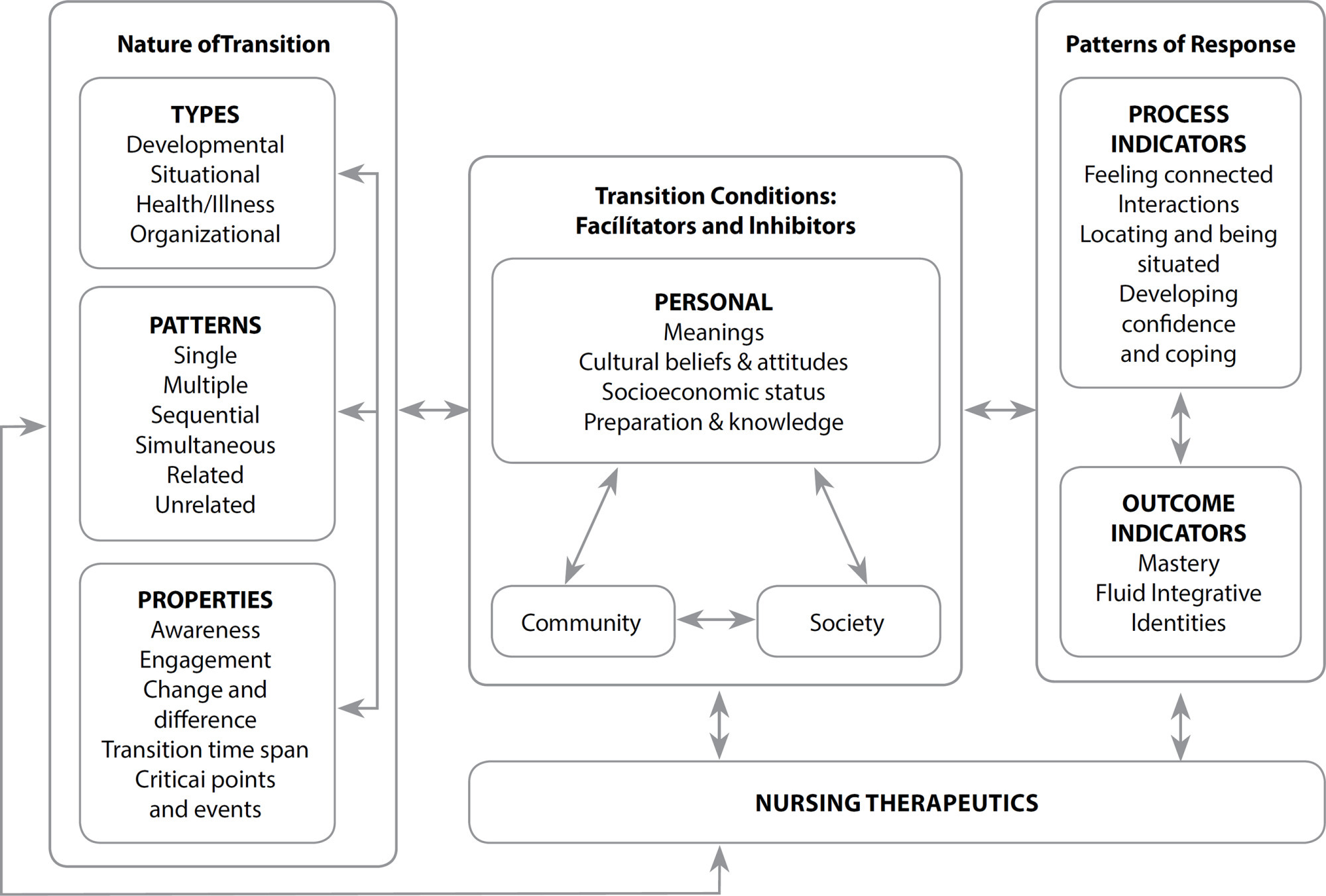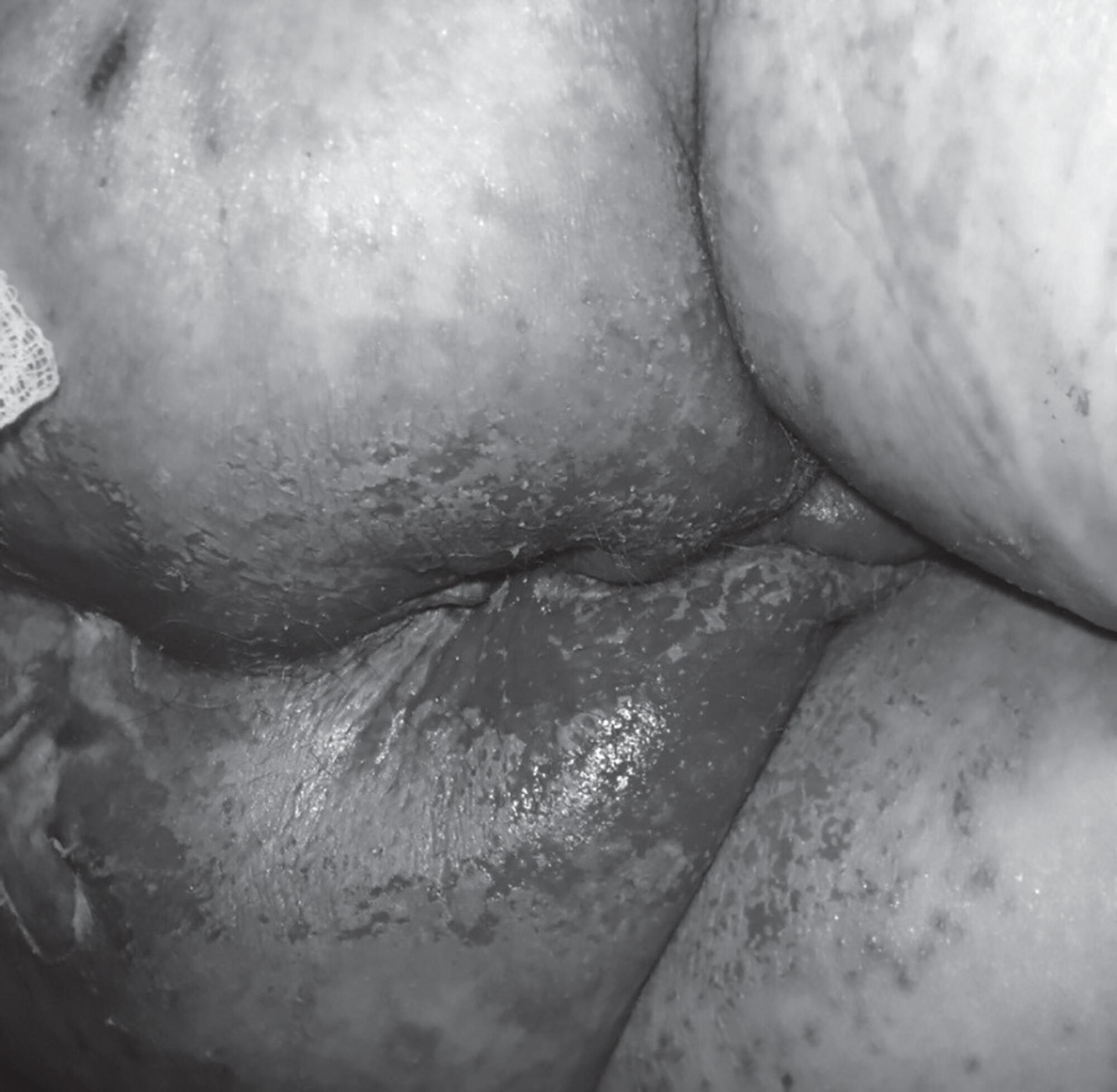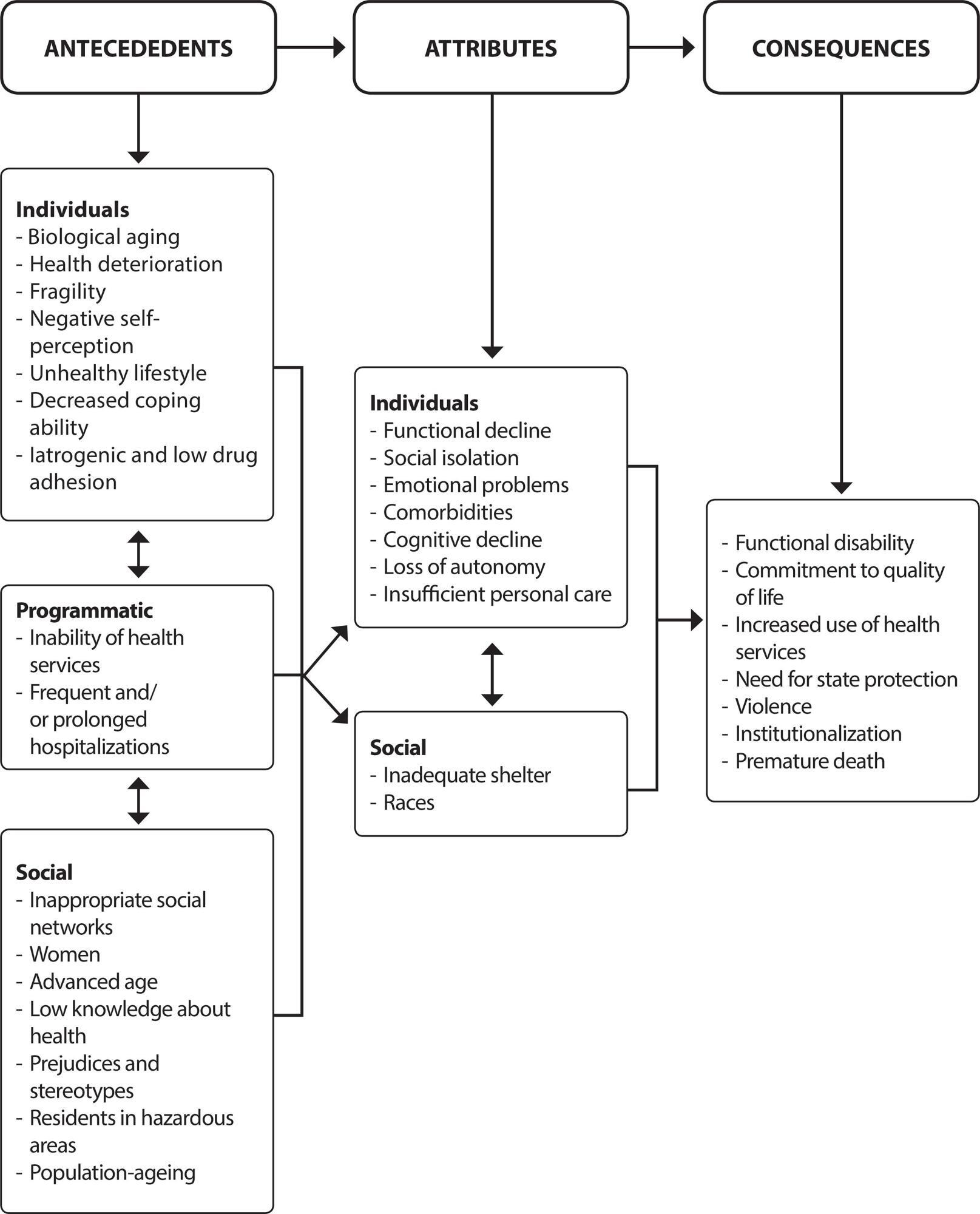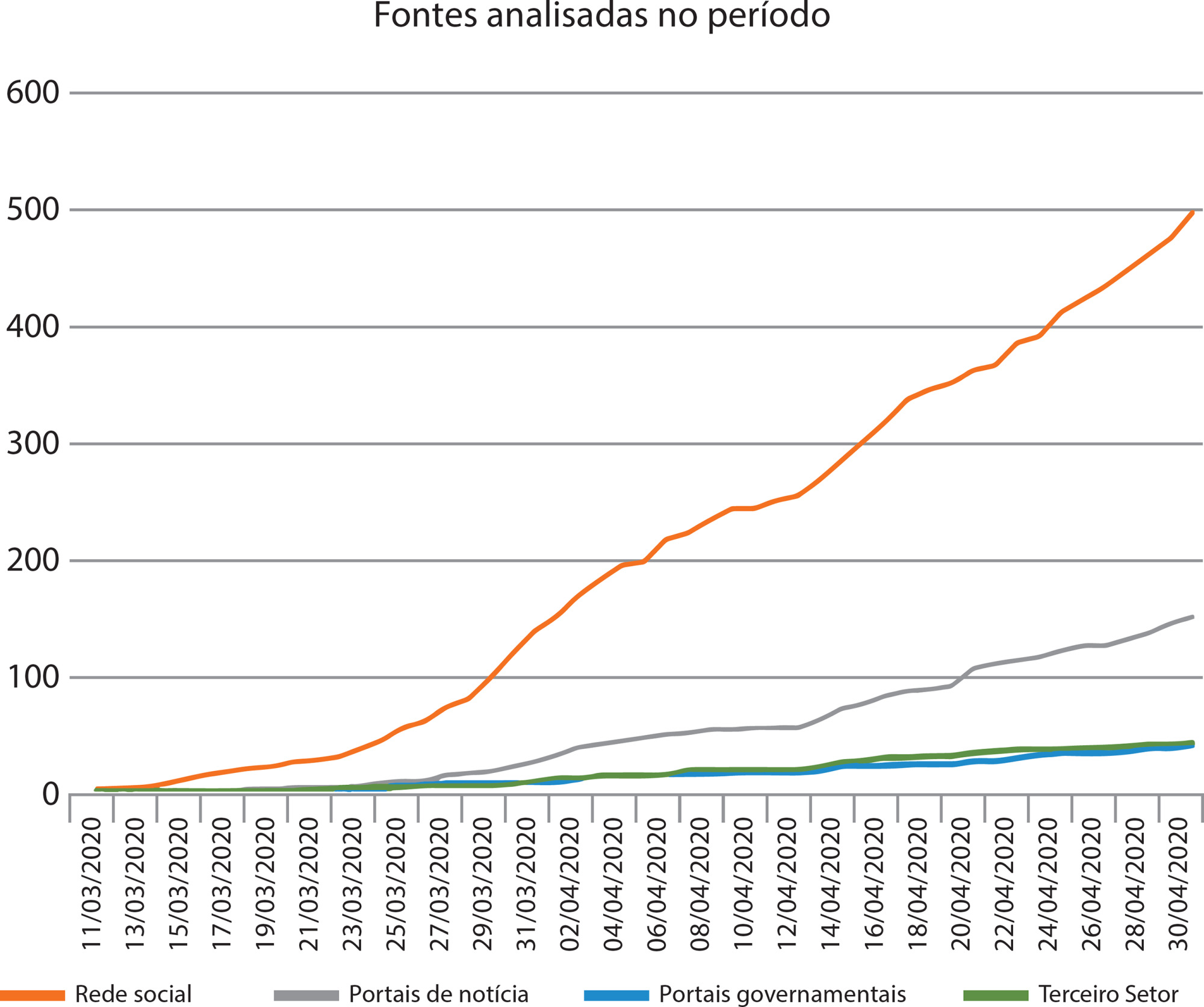-
ERRATUM23/07/2021
ERRATUM
Revista Brasileira de Enfermagem. 2021;74(3):e2021n3e07
Resumen
ERRATUMERRATUM
Revista Brasileira de Enfermagem. 2021;74(3):e2021n3e07
DOI 10.1590/0034-7167.20217403e07
Visualizações0Article “Safe Embrace: technological innovation for elderly safety in the use of toilets”, with number of DOI: http://dx.doi.org/10.1590/0034-7167-2017-0751, published in the journal Revista […]Ver mais -
ARTÍCULO ORIGINAL23/07/2021
Perceptions about the Therapeutic Itinerary after stroke: a qualitative research
Revista Brasileira de Enfermagem. 2021;74(3):e20201140
Resumen
ARTÍCULO ORIGINALPerceptions about the Therapeutic Itinerary after stroke: a qualitative research
Revista Brasileira de Enfermagem. 2021;74(3):e20201140
DOI 10.1590/0034-7167-2020-1140
Visualizações0Ver maisABSTRACT
Objectives:
to analyze the understanding of the Therapeutic Itinerary of people affected by stroke in the Unified Health System context of a medium-sized city in the state of São Paulo.
Methods:
this is a clinical-qualitative, using in-depth semi-structured interviews, conducted in 2019 with 6 patients, a number determined by theoretical saturation.
Results:
qualitative content analysis allowed the construction of four categories that emerged from the data: a) You are having a stroke! – Identifying the problem; b) Anguish and expectations in waiting for assistance; c) Helplessness and guidance for rehabilitation after hospital discharge; d) Spirituality in rehabilitation after stroke.
Final Considerations:
the affected people expressed feelings and meanings, such as fear, anguish, sadness, beliefs and uncertainties, in order to shed light on the complexity inherent to the experiences of Therapeutic Itinerary of stroke.

-
23/07/2021
Risk and protective factors for depressive symptoms and suicidal behavior in the general population
Revista Brasileira de Enfermagem. 2021;74:e20201269
Resumen
Risk and protective factors for depressive symptoms and suicidal behavior in the general population
Revista Brasileira de Enfermagem. 2021;74:e20201269
DOI 10.1590/0034-7167-2020-1269
Visualizações0Ver maisABSTRACT
Objective:
To analyze the participants’ perception of risk and protective factors for depressive symptoms and their relationship with suicidal behavior in a general adult population.
Method:
Exploratory-descriptive, qualitative research, using Content Analysis. Interviews with 200 participants over 18 years old, domiciled in Poços de Caldas/MG, between January 2017 and October 2018.
Results:
Risk factors were sadness, loneliness, problematic family relationships, losses/difficulties in emotional relationships, unemployment/financial difficulties, depressive symptoms, worsening of the feeling of depression, inability to frustration, problems in experiencing spirituality. Protective factors were family, emotional relationships, and spirituality. Suicidal behavior was related to the severity of depression, feelings of hopelessness, psychiatric comorbidities, and unemployment.
Final considerations:
Perception of risk factors was linked to family problems, sadness, loss of emotional relationships, unemployment, loneliness, and inability to experience frustrations; and the protective ones perceived were family and spirituality. There was a relationship between depressive symptoms and suicidal behavior.
-
REFLEXIÓN19/07/2021
Social control and nursing performance in defense of life in the COVID-19 pandemic
Revista Brasileira de Enfermagem. 2021;74:e20201310
Resumen
REFLEXIÓNSocial control and nursing performance in defense of life in the COVID-19 pandemic
Revista Brasileira de Enfermagem. 2021;74:e20201310
DOI 10.1590/0034-7167-2020-1310
Visualizações0Ver maisABSTRACT
Objective:
to reflect on social control in health and the contributions that nursing can make to cope with the COVID-19 pandemic.
Methods:
this is a theoretical reflection, elaborated from discussions based on literature and the experience of authors’ performance in social control and in Primary Care. It is divided into two topics: the first, related to aspects of institutionalized social control; the second, related to the perspectives for nursing in this space.
Results:
limits and relevant aspects for nurses’ role in social control are presented, contributing to a perspective of praxis in health based on their ethical-political commitment and their technical competence in the coordination and management of care to face the pandemic.
Final considerations:
nurses’ role in social control favors the strengthening of the struggle for the right to life above profits, especially through popular participation in the community context in Primary Care.
-
16/07/2021
The care offered by nurses to elders with coronary artery disease from the perspective of Transitions Theory
Revista Brasileira de Enfermagem. 2021;74:e202000992
Resumen
The care offered by nurses to elders with coronary artery disease from the perspective of Transitions Theory
Revista Brasileira de Enfermagem. 2021;74:e202000992
DOI 10.1590/0034-7167-2020-0992
Visualizações0Ver maisABSTRACT
Objective:
To analyze the planning and implementation of the care offered by nurses to elders with coronary disease during the hospital-house transition.
Methods:
Qualitative research that used the Transitions Theory as a theoretical reference. The participants were 12 nurses who work in a hospital that specializes in cardiology, in the city of Salvador-BA. A semistructured interview was carried out from January to February 2018, and the data was analyzed using the Content Analysis technique.
Results:
Transition care takes place on the day of discharge. The presence of the family was found to be a facilitator; low adherence, poor financial situations, the low educational levels inhibited its implementation. The rehospitalization is an indicator of the results of the transition of care.
Final considerations:
The planning and implementation of transition care is not effective. It must provide safety in the management of self-care in the home of elders with coronary disease and their families.

-
16/07/2021
Clinical validation of nursing diagnosis Fragile Elderly Syndrome
Revista Brasileira de Enfermagem. 2021;74:e20200628
Resumen
Clinical validation of nursing diagnosis Fragile Elderly Syndrome
Revista Brasileira de Enfermagem. 2021;74:e20200628
DOI 10.1590/0034-7167-2020-0628
Visualizações0Ver maisABSTRACT
Objective:
to clinically validate the nursing diagnosis of NANDA-I Frail Elderly Syndrome in hospitalized elderly.
Method:
a methodological study, guided by the STROBE instrument, composed of 40 elderly people admitted to a teaching hospital in Paraíba, Brazil. The last phase of Hoskins’ Nursing Diagnostic Validation Model: clinical validation was adopted. Data collection took place from August to December 2018. The data were analyzed using univariate descriptive statistics. It was approved by the hospital’s ethics and research committee.
Results:
nine defining characteristics were validated; seven risk factors; six populations at risk and two associated conditions.
Conclusion:
the validation of the nursing diagnosis of the Frail Elderly Syndrome in our socio-cultural context was considered appropriate, being an important step for critical thinking that underlies the decision-making of nurses in the care of the frail elderly, as well as professional practice.
-
16/07/2021
Sleep quality and its association with menopausal and climacteric symptoms
Revista Brasileira de Enfermagem. 2021;74:e20201150
Resumen
Sleep quality and its association with menopausal and climacteric symptoms
Revista Brasileira de Enfermagem. 2021;74:e20201150
DOI 10.1590/0034-7167-2020-1150
Visualizações0Ver maisABSTRACT
Objective:
to assess sleep quality in menopausal women and its association with symptoms related to this period.
Method:
this is a cross-sectional, analytical and correlational study. Sleep was assessed using the Pittsburgh Sleep Quality Index; and climacteric symptoms, according to the Menopause Rating Scale. To compare the total score and each Menopause Rating Scale domain with the PSQI classification, the Mann-Whitney U non-parametric test was used. P<0.05 was considered significant.
Results:
261 women (67.8%) were classified as bad sleepers. There was a positive and significant correlation between the sleep scale scores and the total menopause score and its domains. Women categorized as poor sleepers had worse scores on the menopause symptom scale.
Conclusion:
women with worse sleep quality revealed greater severity of symptoms related to menopause.
-
16/07/2021
Correlation between quality of life, depression, satisfaction and functionality of older people with HIV
Revista Brasileira de Enfermagem. 2021;74:e20201334
Resumen
Correlation between quality of life, depression, satisfaction and functionality of older people with HIV
Revista Brasileira de Enfermagem. 2021;74:e20201334
DOI 10.1590/0034-7167-2020-1334
Visualizações0Ver maisABSTRACT
Objective:
To analyze the correlation between the quality of life, depression, life satisfaction, and functional capacity in elderly people living with the Human Immunodeficiency Virus (HIV).
Methods:
A cross-sectional study developed in reference hospitals for treatment and follow-up of people with HIV. 241 elderly people participated by applying a questionnaire containing sociodemographic variables, the HIV/AIDS target quality of Life, the Barthel Index, the Life Satisfaction Scale, and the abbreviated version with 15 items of the Yesavage Geriatric Depression Scale.
Results:
The analyses showed an inverse correlation between the dimensions of the HAT-Qol with depression, a positive correlation in the domain satisfaction with life, and statistically significant, but weak, with functionality.
Conclusion:
Depression impairs quality of life in all dimensions, while life satisfaction influences this aspect more positively than functional capacity.
Descriptors:
Quality of Life; Depression; Personal Satisfaction; Aged; HIV.
-
ARTÍCULO ORIGINAL04/12/2020
Lesão por pressão relacionada ao uso de equipamentos de proteção individual na pandemia da COVID-19
Revista Brasileira de Enfermagem. 2020;73:e20200670
Resumen
ARTÍCULO ORIGINALLesão por pressão relacionada ao uso de equipamentos de proteção individual na pandemia da COVID-19
Revista Brasileira de Enfermagem. 2020;73:e20200670
DOI 10.1590/0034-7167-2020-0670
Visualizações0RESUMO
Objetivo:
Descrever prevalência e fatores associados da lesão por pressão relacionada ao uso de equipamentos de proteção individual durante a pandemia da COVID-19.
Métodos:
Estudo transversal realizado por meio de instrumento disponibilizado em redes sociais com 1.106 profissionais de saúde. Os dados foram analisados por meio de estatística descritiva e comparada, considerando valor de p < 0,05.
Resultados:
Houve prevalência de 69,4% para lesão por pressão relacionada ao uso do equipamento de proteção individual, com uma média de 2,4 lesões por profissional. Os fatores significativos foram: menores de 35 anos de idade, trabalhar e fazer uso de equipamentos de proteção individual por mais de seis horas no dia, em unidades hospitalares e sem o uso de insumos para proteção.
Conclusão:
A lesão por pressão relacionada ao uso de dispositivos médicos apresentou alta prevalência nessa população. O reconhecimento da lesão nesses profissionais possibilita avançar em estratégias de prevenção.
Palavras-chave: CoronavírusEquipamento de Proteção IndividualLesão por PressãoPandemiasPessoal de SaúdeVer mais -
ARTÍCULO ORIGINAL13/07/2020
Dermatite associada à incontinência em idosos: prevalência e fatores de risco
Revista Brasileira de Enfermagem. 2020;73:e20180475
Resumen
ARTÍCULO ORIGINALDermatite associada à incontinência em idosos: prevalência e fatores de risco
Revista Brasileira de Enfermagem. 2020;73:e20180475
DOI 10.1590/0034-7167-2018-0475
Visualizações0Ver maisRESUMO
Objetivo:
Determinar prevalência e fatores de risco para dermatite associada à incontinência em idosos.
Método:
Estudo transversal exploratório realizado em hospitais públicos. Obtevese prevalência da dermatite e associações pelo cálculo da razão. A dimensão do efeito foi estimada pela razão de chances com intervalo de confiança de 95% e significância estatística p < 0,05.
Resultados:
Incluíram-se 138 idosos, média de idade 77,2 anos (± 9,3); 69 (50%) com incontinência fecal e urinária combinadas. A prevalência de dermatite foi 36,2% (50); 28% (14) apresentavam lesão por pressão; 14% (7), candidose. Foram fatores de risco: maior tempo de internação (Odds Ratio = 5,8 [2,6-12,9]), obesidade (Odds Ratio = 3,6 [1,2-10,4]), alto nível de dependência (Odds Ratio = 2,4 [1,1-5,0]) e alto risco para lesão por pressão (Odds Ratio = 6,1 [1,4-26,9]).
Conclusão:
Houve alta prevalência de dermatite associada à incontinência. O reconhecimento precoce dos fatores de risco favorece ações preventivas efetivas.

-
ARTÍCULO ORIGINAL21/10/2019
Nursing care systematization: perceptions and knowledge of the Brazilian nursing
Revista Brasileira de Enfermagem. 2019;72(6):1547-1553
Resumen
ARTÍCULO ORIGINALNursing care systematization: perceptions and knowledge of the Brazilian nursing
Revista Brasileira de Enfermagem. 2019;72(6):1547-1553
DOI 10.1590/0034-7167-2018-0606
Visualizações0Ver maisABSTRACT
Objective:
to present the perception and knowledge of Brazilian nursing nurses and academics regarding Nursing Care Systematization.
Method:
a descriptive study, carried out in the first half of 2018.
Results:
of the 596 respondents, 86% perceived Nursing Care Systematization as very important, but only 60.9% used it in their care practice. Its use was statistically associated with a higher level of training. Non-utilization was associated with the perception that it is irrelevant and with little knowledge on the Nursing Process, even in the face of recognition of its obligation. Among professionals who wish to learn more about the subject, understanding the application of the process, especially the planning step, is perceived as a necessity.
Conclusion:
the relevance perception of systematization and levels of knowledge of the professional/academic are directly related to the use or not of Nursing Care Systematization principles.

-
ARTÍCULO DE REVISIÓN05/12/2019
Vulnerability of the elderly: a conceptual analysis
Revista Brasileira de Enfermagem. 2019;72:337-344
Resumen
ARTÍCULO DE REVISIÓNVulnerability of the elderly: a conceptual analysis
Revista Brasileira de Enfermagem. 2019;72:337-344
DOI 10.1590/0034-7167-2018-0728
Visualizações0Ver maisABSTRACT
Objective:
To analyze the concept of vulnerability of the elderly.
Method:
A concept analysis, according to the method proposed by Walker and Avant, operationalized through integrative review through search in scientific data portals using the
Descriptors:
Health vulnerability, aged, health services for the aged, health of the elderly, vulnerable populations and geriatric health services. To compose the literary corpus, 36 studies were selected.
Results:
Concept antecedents, as well as its attributes, were identified in individual, social and programmatic characteristics, which make up the characteristics of “vulnerability of the elderly”, besides consequences of the phenomenon. These characteristics were analyzed with emphasis on aspects that contribute to the process of vulnerability of the elderly.
Conclusion:
The study demonstrated the multidimensionality of the phenomena studied, highlighting the peculiarities of vulnerability during aging. However, there is a need for further studies on the construct.

-
ARTÍCULO ORIGINAL21/10/2019
Workloads and burnout of nursing workers
Revista Brasileira de Enfermagem. 2019;72(6):1435-1441
Resumen
ARTÍCULO ORIGINALWorkloads and burnout of nursing workers
Revista Brasileira de Enfermagem. 2019;72(6):1435-1441
DOI 10.1590/0034-7167-2017-0659
Visualizações0Ver maisABSTRACT
Objective:
to identify workloads in nursing work and its association with nursing worker burnout.
Method:
a cross-sectional study, including 211 nursing workers from a university hospital, between July and August 2016. For the analysis, the descriptive statistics, Chi-Square Test, Fisher’s Exact Test and Mann Whitney U-Test were used.
Results:
the most evidenced loads were biological. A significant association was found between workloads and workers’ occupation, as well as a significant association between workloads and worker burnout. Burnout caused upper limb pain, neck and lumbar pain, lower limb pain, muscle spasm, lower limb edema, mental fatigue, headache, nervousness, and forgetfulness.
Conclusion:
workloads identification is a subsidy for the promotion of interventions that minimize the burnout generated to the health of the nursing worker.
-
19/08/2019
La intervención humor en la interacción enfermero-paciente
Revista Brasileira de Enfermagem. 2019;72(4):1078-1085
Resumen
La intervención humor en la interacción enfermero-paciente
Revista Brasileira de Enfermagem. 2019;72(4):1078-1085
DOI 10.1590/0034-7167-2018-0609
Visualizações0RESUMEN
Objetivo:
Describir los factores que influencian el uso del humor en el cuidado de enfermería, su aplicabilidad y beneficios.
Método:
Revisión de alcance según la metodología de Arksey y O’Mally. Se investigaron artículos publicados entre 2008 y 2018, en las plataformas EBSCO Host, Biblioteca Virtual en Salud y Google Académico.
Resultados:
Se han identificado 465 artículos e incluidos 17 de ellos. Se encontró información sobre la definición de humor; su aplicabilidad como intervención de enfermería; el humor como herramienta para mejorar la comunicación y la relación entre el enfermero y el paciente; factores de influencia; el tipo de intervenciones de humor; beneficios del humor en la atención de salud y; las limitaciones y precauciones de intervención del humor.
Conclusión:
El humor promueve la comunicación, las relaciones y el bienestar; ayuda a manejar situaciones difíciles y desagradables, reduce la tensión, la incomodidad y el estrés; y fortalecer el sistema inmunológico. Esta intervención debe usarse con precaución.
Palavras-chave: ComunicaciónEnfermeríaEvaluación del Resultado de la Atención al PacienteIngenio y Humor como AsuntoRelaciones Enfermera-PacienteVer mais -
29/01/2021
Violência doméstica contra a mulher na pandemia: estratégias de enfrentamento divulgadas pelas mídias digitais
Revista Brasileira de Enfermagem. 2021;74:e20200631
Resumen
Violência doméstica contra a mulher na pandemia: estratégias de enfrentamento divulgadas pelas mídias digitais
Revista Brasileira de Enfermagem. 2021;74:e20200631
DOI 10.1590/0034-7167-2020-0631
Visualizações0RESUMO
Objetivo:
conhecer as estratégias de enfrentamento da violência doméstica contra a mulher divulgadas pelas mídias digitais no início da pandemia de COVID-19.
Métodos:
estudo documental de abordagem qualitativa. A busca aconteceu de 11 de março a 30 de abril de 2020, em quatro fontes: jornais e portais online, rede social, páginas oficiais governamentais e portais do terceiro setor. Realizou-se análise de conteúdo temática dos achados.
Resultados:
foram identificadas 77 estratégias na imprensa jornalística, 93 na rede social, 45 nos portais governamentais e 40 nas organizações do terceiro setor. Da análise, emergiram três categorias empíricas: Estratégias para comunicação com as mulheres; Estratégias adotadas pelos serviços de atendimento; Estratégias para informar a população.
Considerações finais:
a maior parte das estratégias foram adaptações de serviços já existentes, centradas na denúncia da violência pelas mulheres.
Palavras-chave: Estratégias NacionaisMeios de ComunicaçãoPandemiasViolência Contra a MulherViolência DomésticaVer mais
-
20/01/2021
Burnout Syndrome and Associated Factors in Intensive Care Unit Nurses
Revista Brasileira de Enfermagem. 2021;74:e20190535
Resumen
Burnout Syndrome and Associated Factors in Intensive Care Unit Nurses
Revista Brasileira de Enfermagem. 2021;74:e20190535
DOI 10.1590/0034-7167-2019-0535
Visualizações0Ver maisABSTRACT
Objective:
to estimate prevalence and factors associated with Burnout Syndrome in intensive care nurses in a city in the state of Bahia.
Methods:
a cross-sectional, population-based study carried out with 65 intensive care nurses through a self-administered questionnaire, from July to November 2016, containing sociodemographic data, lifestyle, work characteristics. To define burnout syndrome, the Maslach Burnout Inventory was used.
Results:
Burnout Syndrome prevalence was 53.6%, an association was observed with age, tobacco consumption, alcohol use, weekly night shift hours, employment relationship, having an intensive care specialist title, number of patients on duty, monthly income and considering active or high-strain job.
Conclusion:
the results of this study can contribute to expanding the discussion on stressful working conditions in Intensive Care Units.
Búsqueda
Buscar en:
Nuvem de Tags
Adolescente (85) Atenção Primária à Saúde (239) COVID-19 (91) Criança (91) Cuidados de Enfermagem (269) Educação em Enfermagem (151) Educação em Saúde (139) Enfermagem (930) Enfermagem Pediátrica (86) Estudantes de Enfermagem (77) Estudos de Validação (131) Família (87) Idoso (208) Promoção da Saúde (99) Qualidade de Vida (104) Saúde do Trabalhador (86) Saúde Mental (145) Saúde Pública (82) Segurança do Paciente (150) Tecnologia Educacional (100)



